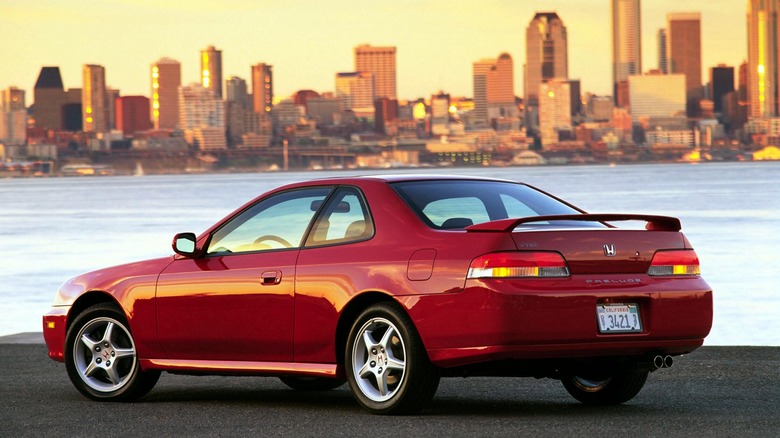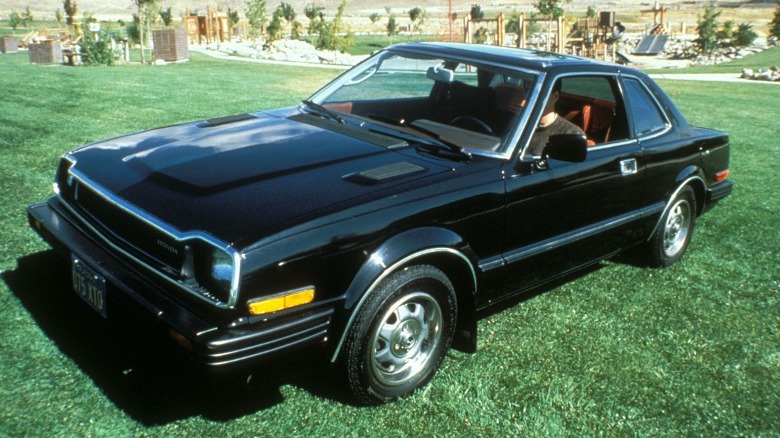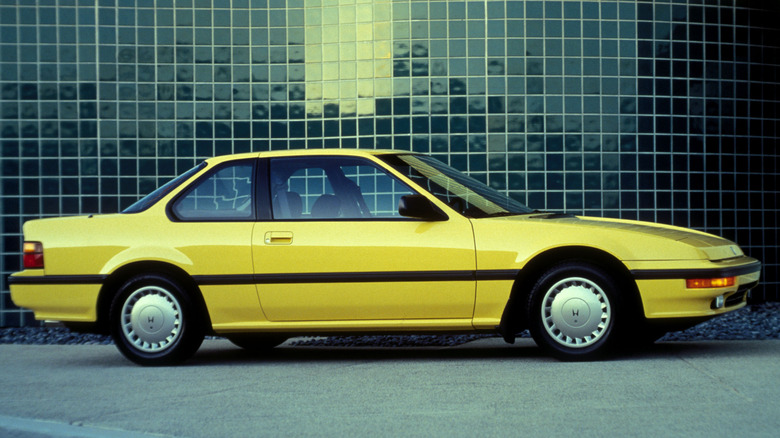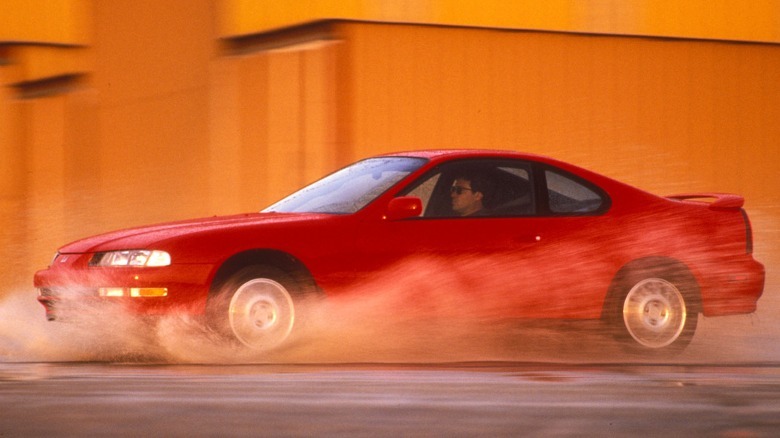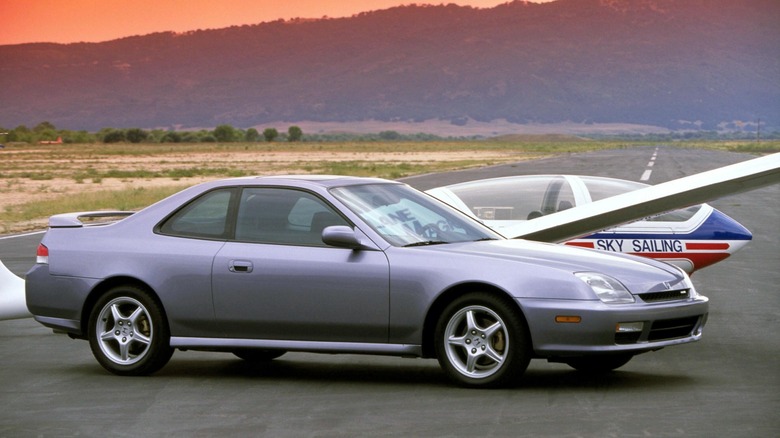The History Behind One Of Honda's Best-Kept Secrets: The Prelude
When one thinks of notable Hondas, they likely picture the Civic and Accord. If you think of something sporty, the Acura NSX or Integra likely come to mind. The Civic, Accord, and NSX, as great as they are, have the potential to steal the spotlight from another sporty Honda, the Prelude. The Prelude was Honda's sports coupe that, while not as fast or spectacular as the NSX or beloved by the tuning crowd as the Integra, has more than enough performance chops to be one of Honda's best cars.
The Prelude has been around since the late 1970s, but the automotive public is likely most familiar with the generations present throughout the '80s and '90s, with its long, low hood and distinctive narrow grille. It looked kind of like a two-door Accord if it went to the gym and was angry all of the time. The car lasted for five generations in the United States, and while fondly remembered by anyone who has ever driven or owned one, it has somehow never attained the same fame as the aforementioned Integra or Honda Civic Si or Type-R.
The Prelude's early years
The first Prelude (and itself a prelude of things to come) was not Honda's best effort for the 1978 model year. It wasn't a bad-looking car by any means, but it was mechanically lacking. At full tilt, it made 72 (yes, only 72) horsepower. And the acceleration time was a leisurely 19 seconds to get to 60 miles per hour. For comparison, the Zastava Yugo, a disastrously slow car, could complete a quarter-mile run in the same time.
Fortunately, the first generation of Prelude only lasted until 1983. When the second generation Prelude arrived, it was off to the races. This time, it threw down 100 horsepower from its 1.8-liter four-cylinder engine. Additional improvements to the suspension made it a competent driver that was a few steps above your average Accord. It was praised for its performance and handling, noting that it was a vast improvement over the prior generation. 38 miles per gallon wasn't too bad either.
With several tweaks to the Prelude to make it faster and significantly more interesting to drive, Honda had a hit on its hands, and the second generation was only going to get better. In 1985, the Honda Prelude Si was birthed, and with it, a bored-out now 1.9-liter engine that made an additional 10 horsepower. Plus, it had a bit of Honda's Formula 1 tech baked into the car in the form of electronic injection as the previous models were carbureted. The second generation Prelude would come to a close in 1987.
Honda's unassuming sports car
By the time the late '80s rolled around, the Japanese car market was firmly within what would be called "The Bubble Era." And it was when the best of the best Japanese cars were born. The Prelude was no exception. Practically an elder statesman at this point, the Prelude's awkward years were behind it, and Honda pulled out all the stops for the third generation starting in 1988. Power was boosted no matter what version you bought, with the base model now putting out 109 horsepower, the Si boasting 135 horsepower, and the extra treat that was four-wheel-steering. By the time the '90s rolled around, the Prelude featured the most powerful four-cylinder in Honda's American lineup. The third generation's final year was 1991.
The fourth generation, lasting from 1992 to 1996, took the styling in a decidedly more modern direction, eschewing the harsh angles of years past and doing away with pop-up headlights. More power was, of course, an expected upgrade to this generation, with the "hottest" Prelude's 2.2-liter VTEC-equipped engine generating 190 horsepower in 1996, quite respectable in a car that only weighed 2,932 pounds.
The end of the Prelude
The fifth and final generation saw the pinnacle of what the Prelude was capable of. Some angles were back with the redesign, but it retained the long and low silhouette it first acquired in the late '70s. Honda never tried anything crazy during the entire run of the Prelude. It never got a big six-cylinder engine and was never turbocharged; horsepower never exceeded 200. The Prelude's more than two decades on earth were marked by steady, sane progress. It was the opposite of a comparatively goofy car like the Toyota Supra. 2001 marked the final year of the Prelude, and it came equipped with a 2.2-liter engine that produced 200 horsepower, a perfectly sensible amount.
The Prelude was by no means a sales dud; it sold a healthy 832,139 units over its lifespan. But it doesn't have the same cultural cache as its sibling, the NSX, or its rivals from Toyota. Perhaps it was too staid for the tuners and too exciting to be a commuter; either way, that's a shame. It deserves a renaissance of sorts as it's one of Honda's best yet often unappreciated cars.
